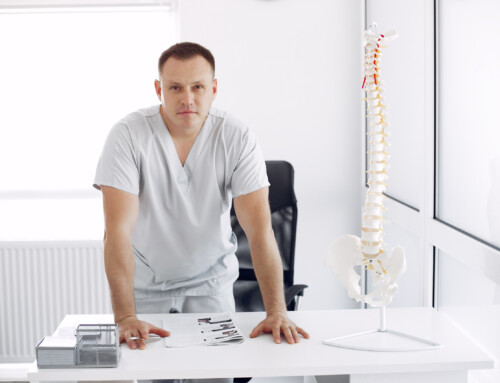Intro
If you or a loved one is considering or has recently undergone kyphoplasty surgery, you may be wondering about the recovery process. Kyphoplasty is a minimally invasive procedure used to treat vertebral compression fractures, and while it offers great benefits, proper recovery is crucial for optimal results. In this blog, we will delve into the topic of kyphoplasty recovery time and provide a guide on what to expect during this period. As experts in spine and pain management, we want to ensure that our readers have all the necessary information to aid in their recovery journey. So let’s get started on getting you back on your feet!
Understanding Kyphoplasty
Kyphoplasty is a minimally invasive surgical procedure that is commonly used to treat vertebral compression fractures. Understanding the ins and outs of this procedure is crucial for a successful recovery. So, what exactly is kyphoplasty? During this procedure, a small incision is made in the back and a specialized balloon device is inserted into the fractured vertebra. The balloon is then inflated, which helps to restore the height and shape of the vertebra. Once the desired height is achieved, bone cement is injected to stabilize the fracture.
Recovery from kyphoplasty can vary from patient to patient, but generally, it is a relatively quick process. Many patients are able to return home on the same day as the procedure, and full recovery can be achieved within a few weeks. It is important to follow the kyphoplasty recovery instructions provided by your healthcare provider, which may include avoiding strenuous activities, wearing a back brace for a period of time, and taking prescribed medications for pain management. Your doctor will monitor your progress and provide guidance throughout your recovery journey.
Understanding the kyphoplasty procedure and what to expect during recovery can help ease any concerns or uncertainties you may have. It is always best to consult with your healthcare provider to get personalized information and recommendations for your specific situation.
Expectations After the Procedure
After undergoing kyphoplasty, it’s important to have realistic expectations for your recovery. Recovery time from kyphoplasty can vary from patient to patient, but most people can expect to experience some level of discomfort and pain in the first few days following the procedure. This is completely normal and can be managed with pain medication prescribed by your healthcare provider. It’s also common to experience bruising or swelling around the incision site, but this should subside within a few weeks.
During the initial recovery period, it’s crucial to follow the kyphoplasty recovery instructions provided by your doctor. This may include wearing a back brace for a specific amount of time, avoiding strenuous activities, and taking prescribed medications as directed. It’s important to be patient and not rush the healing process, as doing so could potentially delay your full recovery.
Recovery from kyphoplasty is typically quicker for younger patients, while older individuals may take longer to heal. Your doctor will monitor your progress and provide guidance throughout your recovery journey. If you experience any unusual or concerning symptoms, such as increased pain, fever, or difficulty breathing, it’s important to seek medical attention immediately.
Remember, every individual’s recovery journey is unique, so it’s important to consult with your healthcare provider to get personalized information and recommendations for your specific situation.
The Path to Full Recovery
After undergoing kyphoplasty, the path to full recovery may require some patience and perseverance. The length of the recovery period can vary depending on factors such as the individual’s age, overall health, and the severity of the vertebral compression fracture. Generally, it takes several weeks to achieve a complete recovery after a kyphoplasty procedure.
During the recovery process, it’s important to follow the instructions provided by your healthcare provider. This may include avoiding strenuous activities, wearing a back brace for a specified period of time, and taking prescribed medications as directed. It’s crucial not to rush the healing process, as this could potentially delay your full recovery.
Engaging in light exercises or physical therapy under the guidance of a healthcare professional can help strengthen the back muscles and improve mobility. It’s important to gradually increase activity levels, ensuring that you don’t strain or overexert yourself. This gradual progression will allow your body to adjust and heal properly.
In addition to physical recovery, it’s essential to prioritize your mental health during this time. Recovering from a medical procedure can be challenging, and it’s natural to feel a range of emotions. Reach out to your healthcare provider or a mental health professional if you need support during this journey.
Remember, every individual’s recovery experience is unique, so it’s important to consult with your healthcare provider to get personalized advice and recommendations based on your specific situation. Stay positive, be patient, and soon you’ll be back on your feet, enjoying life to the fullest once again.
Do’s and Don’ts During Recovery
During your recovery from kyphoplasty, there are some important do’s and don’ts to keep in mind to ensure a smooth healing process. Here are some guidelines to follow:
Do follow your healthcare provider’s instructions: Your doctor will provide you with specific instructions for your recovery, including restrictions on activities and the use of any necessary assistive devices such as a back brace. It’s important to follow these instructions closely to avoid complications and promote proper healing.
Do take prescribed medications as directed: Your healthcare provider may prescribe pain medication or other medications to manage your discomfort during the recovery period. Take these medications as directed, and if you have any concerns or experience side effects, be sure to reach out to your healthcare provider.
Do engage in light exercises and physical therapy: Gradual re-introduction of movement and exercises can be beneficial for strengthening your back muscles and improving mobility. Consult with a healthcare professional to determine the appropriate exercises and physical therapy regimen for your specific situation.
Don’t overexert yourself: While it’s important to gradually increase your activity levels, it’s equally important not to push yourself too hard too soon. Straining or overexerting yourself can lead to setbacks in your recovery. Listen to your body and rest when needed.
Don’t ignore any unusual or concerning symptoms: If you experience increased pain, fever, difficulty breathing, or any other concerning symptoms, it’s important to seek medical attention immediately. These symptoms may indicate complications and should not be ignored.
Following these do’s and don’ts can help ensure a successful recovery from kyphoplasty. Remember, every individual’s recovery experience is unique, so it’s important to consult with your healthcare provider for personalized advice and recommendations based on your specific situation. Stay committed to your recovery journey, and soon you’ll be back on your feet, enjoying life to the fullest once again.
Mental Health During Recovery
Recovering from a kyphoplasty procedure not only involves physical healing but also requires attention to your mental well-being. The journey to full recovery can be challenging and it’s normal to experience a range of emotions during this time. It’s important to prioritize your mental health and seek support if needed.
Dealing with the physical limitations and potential pain during balloon kyphoplasty recovery can be overwhelming. It’s common to feel frustrated or anxious about the progress of your healing. Remember that recovery takes time and it’s important to be patient with yourself. Allow yourself to rest and recuperate both physically and mentally.
Maintaining a positive mindset and engaging in activities that bring you joy can be helpful during this period. Surround yourself with a support system of family and friends who can provide emotional support and encouragement. Additionally, consider reaching out to a mental health professional who can offer guidance and coping strategies specific to your recovery journey.
Remember, you are not alone in this process. By prioritizing your mental health and seeking support, you can navigate the recovery period with resilience and come out stronger on the other side.
When to Seek Medical Attention
During your recovery from kyphoplasty, it’s important to be aware of when to seek medical attention. While discomfort and pain are expected during the initial stages of recovery, it’s crucial to recognize any unusual or concerning symptoms that may indicate complications. If you experience increased pain that is not relieved by prescribed medications, or if you develop a fever or difficulty breathing, it’s essential to seek immediate medical attention.
Additionally, if you notice any signs of infection at the incision site, such as increased redness, swelling, or discharge, it’s important to contact your healthcare provider. Other concerning symptoms to watch out for include numbness or weakness in the legs, severe dizziness or fainting, or the inability to pass urine or have a bowel movement.
Elderly individuals may require extra caution and should seek medical attention promptly if they experience any complications or unexpected symptoms during their kyphoplasty recovery. Remember, your healthcare provider is there to support you throughout your recovery journey, so don’t hesitate to reach out if you have any concerns or questions.







